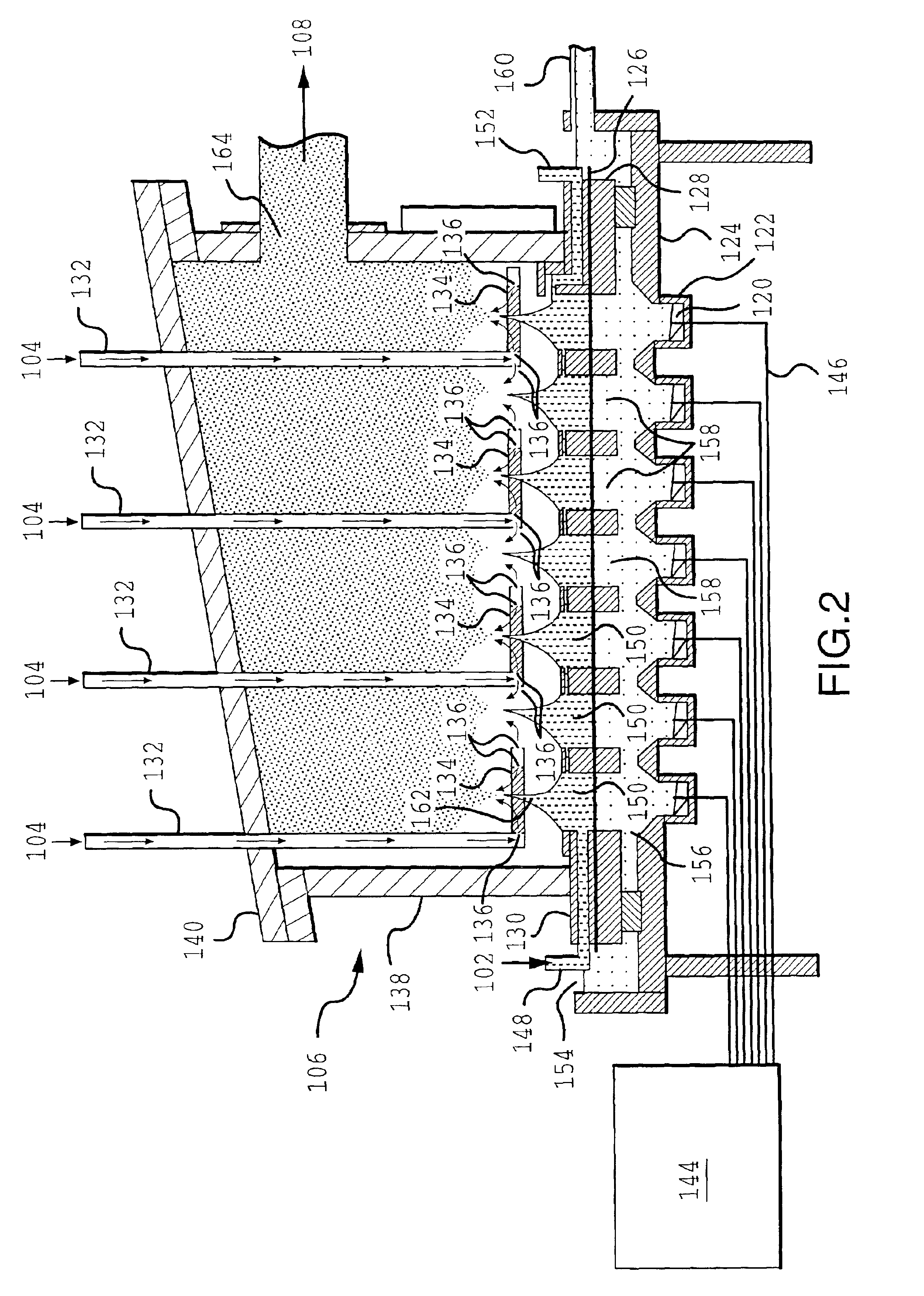Glass powders, methods for producing glass powders and devices fabricated from same
a technology of glass powder and glass powder, which is applied in the manufacture of electromechanical systems, chemical/physical/physical-chemical stationary reactors, and energy-based chemical/physical/physical-chemical processes. it can solve the problems of limited use of sol-gel and related precipitation routes for forming glasses, jagged and irregular morphology of glass powder, and wide spread of particle size and other characteristics
- Summary
- Abstract
- Description
- Claims
- Application Information
AI Technical Summary
Benefits of technology
Problems solved by technology
Method used
Image
Examples
examples
A complex glass precursor solution was prepared including colloidal particulate silica, boric acid, lead acetate, zinc acetate and aluminum nitrate. The solution was atomized using ultrasonic transducers at a frequency of about 1.6 MHZ to produce an aerosol of precursor droplets. Air was used as a carrier gas to move the aerosol through an elongated tubular furnace such that the droplets / particles had a residence time of about 10-12 seconds in the furnace.
The reaction temperature was varied to determine the effect of the reaction temperature on the formation of the particles. Reaction temperatures were 500° C., 600° C., 650° C. and 700° C. At 500° C. and 600° C., it was observed that the powder had a slightly tan color, indicating the presence of unreacted carbon from the acetate precursor. At 650° C. and 700° C., the powders were white. In all cases, the powders were spherical and unagglomerated.
In a further set of experiments, the same precursor solutions (colloidal silica, boric ...
PUM
| Property | Measurement | Unit |
|---|---|---|
| particle size | aaaaa | aaaaa |
| particle size | aaaaa | aaaaa |
| particle size | aaaaa | aaaaa |
Abstract
Description
Claims
Application Information
 Login to View More
Login to View More - R&D
- Intellectual Property
- Life Sciences
- Materials
- Tech Scout
- Unparalleled Data Quality
- Higher Quality Content
- 60% Fewer Hallucinations
Browse by: Latest US Patents, China's latest patents, Technical Efficacy Thesaurus, Application Domain, Technology Topic, Popular Technical Reports.
© 2025 PatSnap. All rights reserved.Legal|Privacy policy|Modern Slavery Act Transparency Statement|Sitemap|About US| Contact US: help@patsnap.com



